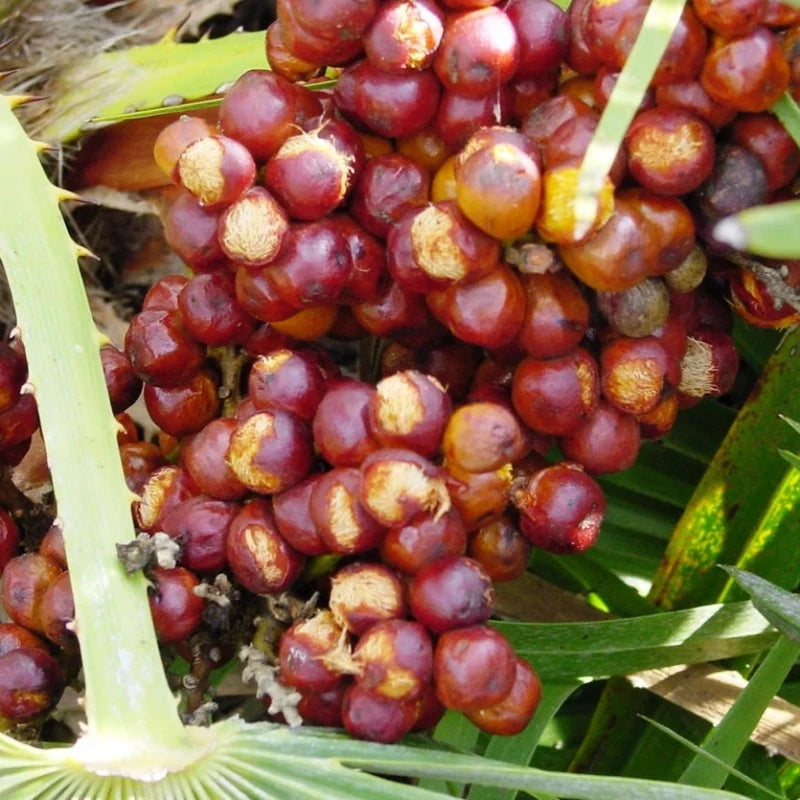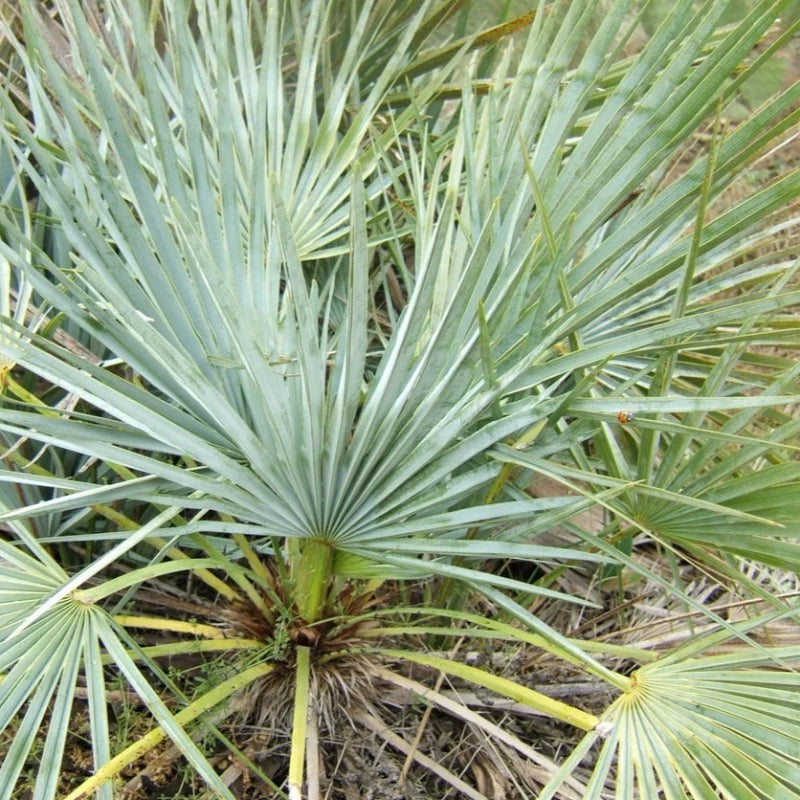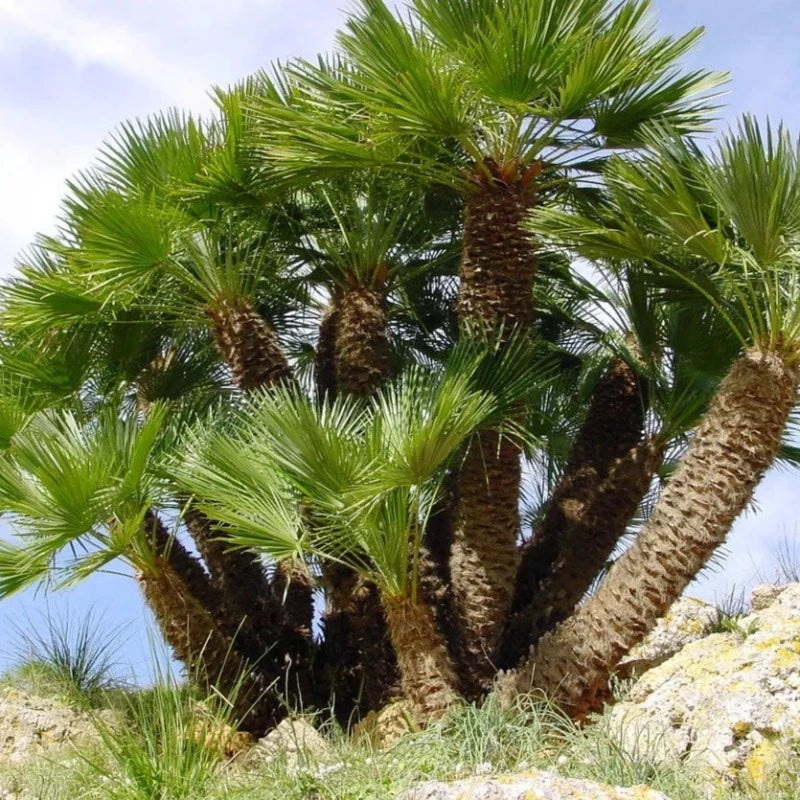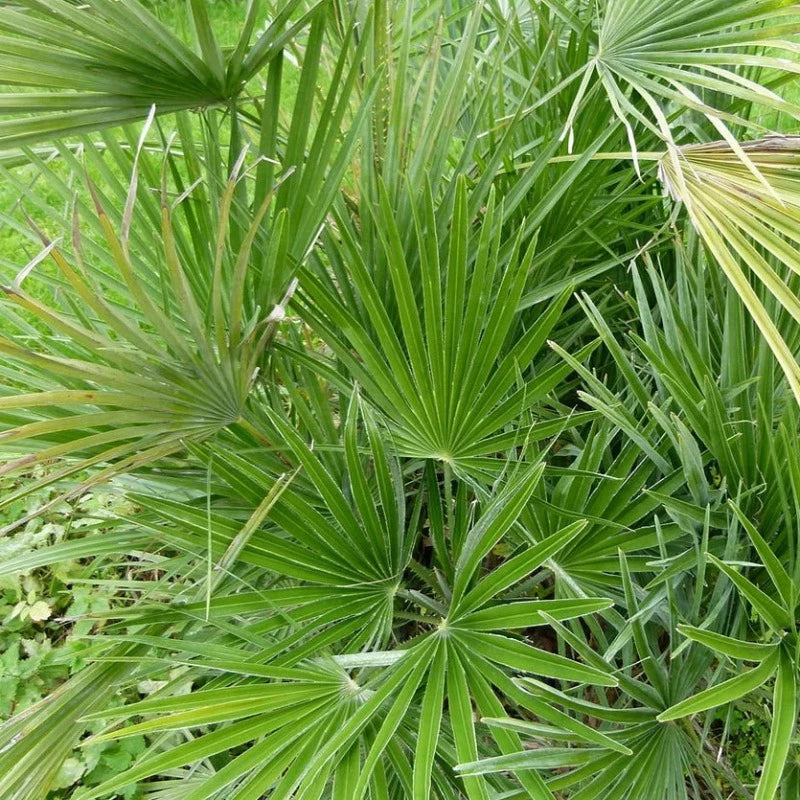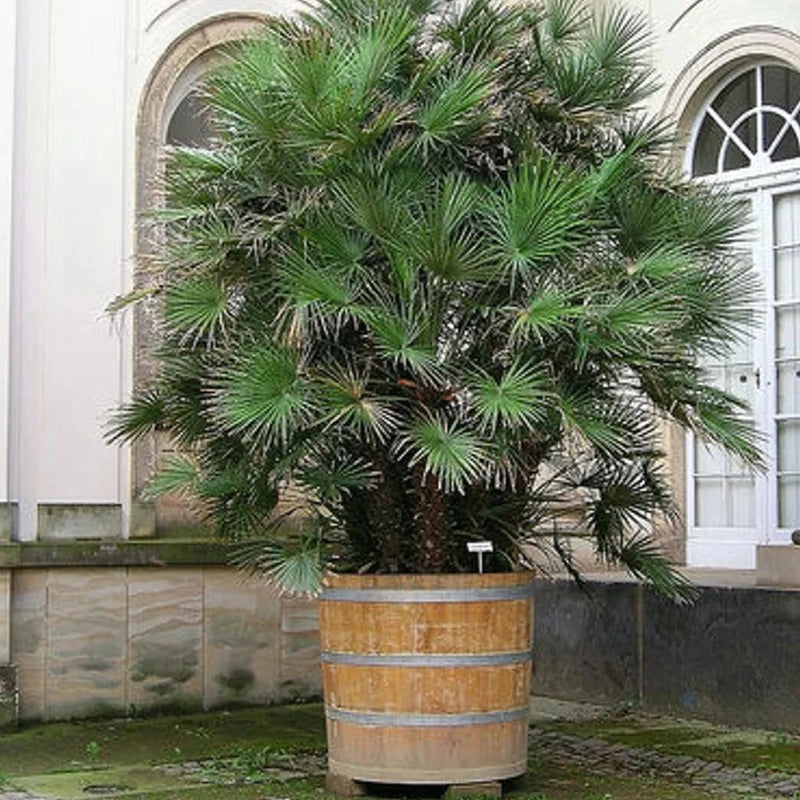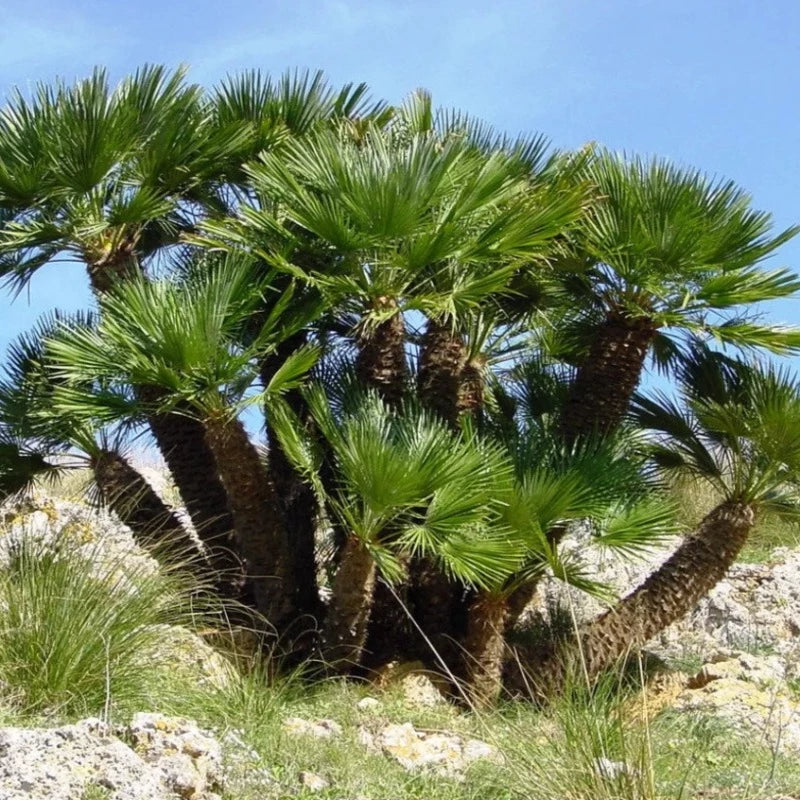- Historical context: The Mediterranean Fan Palm, scientifically known as Chamaerops humilis, is the only palm native to Europe. It has been used by humans for thousands of years.
- Geographical origination: As the name suggests, this palm tree is native to the Mediterranean region, specifically in the countries of Spain, Italy, and Morocco.
- Relevant cultural significance: In the past, the leaves of the Mediterranean Fan Palm were used for making brooms, mats, and baskets. The tree also has a significant place in Mediterranean culture as a symbol of peace and fertility.
- Time period of discovery: The exact time period of discovery is not known, but it has been used by humans for thousands of years.
- Original habitat: The Mediterranean Fan Palm thrives in rocky, arid regions and can be found growing wild in the mountains of the Mediterranean region.
- Notable historical uses: Historically, the tree was used for its wood and leaves. The wood was used for making tools and the leaves were used for weaving into various items.
- Ideal temperature range: The Mediterranean Fan Palm can tolerate temperatures as low as -10°C and as high as 40°C.
- Soil type: It prefers well-drained soil and can tolerate a variety of soil types, including sandy, loamy, and clay soils.
- Sunlight requirements: This palm tree prefers full sun but can tolerate partial shade.
- Watering needs: It has low water needs once established and is drought-tolerant.
- Planting season: The best time to plant Mediterranean Fan Palm seeds is in the spring.
- Germination time: The seeds can take anywhere from 1 to 3 months to germinate.
- Growth cycle duration: The tree grows slowly, reaching maturity in about 15 to 20 years.
- Common pests and diseases: Common pests include palm aphids and diseases include leaf spot and root rot.
- Companion planting advice: It can be planted with other drought-tolerant plants like agave and aloe.
- Common challenges and solutions: One common challenge is overwatering, which can lead to root rot. The solution is to ensure the soil is well-drained and to water sparingly.
- Nutritional values: The fruit of the Mediterranean Fan Palm is edible and is rich in vitamin C.
- Health benefits: The fruit is also known to have antioxidant properties.
- Culinary uses: The fruit can be eaten raw or used in jams and jellies.
- Medicinal uses: In traditional medicine, the fruit was used to treat coughs and colds.
- Other unique advantages: The tree is also valued for its ornamental appeal and is often used in landscaping.
